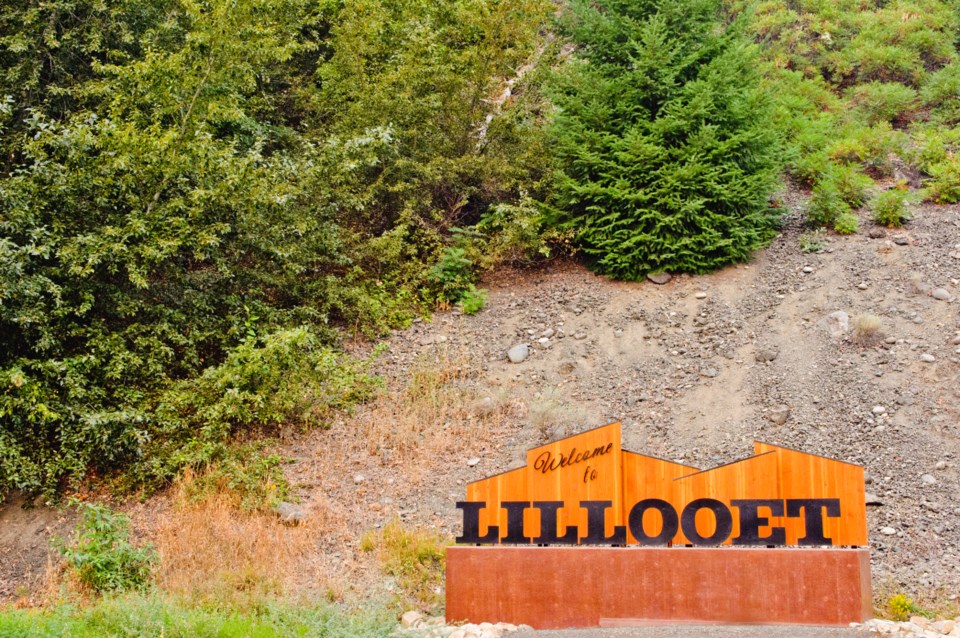On July 8, the St’át’imc Chiefs Council (SCC) declared a state of local emergency across its 11 communities in response to the toxic drug crisis.
“We are losing a generation,” said Chief Justin Kane, chair of the SCC. “Now is the time for us to try to come together and think as one to help tackle the issue at hand.”
The decision to declare the emergency came after a rise in both fatal and non-fatal overdoses in the Lillooet area—a region that now reports the second-highest toxic drug death rate in the province at 116 deaths per 100,000 residents.
“We made a recommendation to bring [a declaration] to all the chiefs, and all chiefs were automatically in support of it,” Kane explained. “There was no question.”
The SCC represents 11 St’át’imc communities—Ts’kw’áylaxw, Xa’xtsa, Xáxli’p, T’ít’q’et, N’Quatqua, Tsal’álh, Xwísten, Sekw’el’wás, Samáhquam, Skátin, and Lil’wat Nation.
“There became a time when we had some losses, but we were also getting quite an amount of overdoses,” said Kane. “So we thought it was a time to look at how we can come together and address the issue.”
The SCC explained the declaration invokes Canada’s Constitution Act (Section 35), the United Nations Declaration Act (UNDA), and B.C.’s Declaration on the Rights of Indigenous Peoples Act (DRIPA) as frameworks requiring immediate consultation and accommodation. The Chiefs Council is formally requesting meetings with provincial Health Minister Josie Osborne, Indigenous Relations Minister Spencer Chandra Herbert, and federal Crown–Indigenous Relations Minister Rebecca Alty.
“We are immediately requesting a meeting,” said Cait Cameron, policy advisor to the SCC. “We want to learn about what immediate engagement and commitments can come from them to discuss both emergency measures and long-term solutions.”
Scope
The province declared a public-health emergency over toxic drugs on April 14, 2016. Since the declaration, the BC Coroners Service reports more than 16,000 British Columbians have died of toxic drug overdoses.
The St’át’imc Nation isn’t the first to declare a state of emergency over toxic deaths. Ehattesaht First Nation, one of 14 communities in the Nuu-chah-nulth Nation on Vancouver Island, declared a state of emergency in February 2023 after six toxic drug deaths.
Since then, more than 30 First Nations communities, including the St’át’imc, have declared their own emergencies.
In February 2024, the Gwa’sala-’Nakwaxda’xw Nations, located in the Port Hardy area of Vancouver Island, declared a state of emergency in response to rising toxic drug-related deaths. In April of the same year, the Tŝilhqot’in National Government declared a local state of emergency across its six member communities in central B.C., citing a sharp spike in toxic drug poisoning deaths and pointing to historical and ongoing colonial harms as a contributing factor.
In September, the Nuu-chah-nulth Tribal Council, declared a state of emergency for its communities, including Ehattesaht.
And in March 2025, the Homalco First Nation—located on Vancouver Island—declared a state of emergency after four young community members died from toxic drugs within the prior six months.
Seeking support
SCC representatives say they’re not just sounding an alarm—they’re asking for tangible, immediate interventions.
“We are seeking next steps to come together with St’át’imc,” Cameron said, noting discussions are already underway with neighbouring First Nations also grappling with the drug toxicity crisis.
Michelle Edwards, a former Cayoose Creek Chief now advising the SCC, said the requested supports span harm reduction, mobile services, mental-health counselling and help for frontline workers and families.
“This is such a large issue that we need everybody together,” Edwards said. “These drugs are very harmful these days, and it’s widespread. It’s not only the Indigenous. We say we’re going to heal everyone. A circle isn’t complete till everybody joins us and we all heal together.”
No blanket solutions
The SCC hopes to move quickly toward concrete planning. An approach combining short-term interventions with long-term healing and housing infrastructure is the goal.
“We need at least within this next month to come together and have a more phased, planned approach,” said Kane. “Identify how to address the needs in the short-term and the long-term.”
Edwards stressed the emergency must be met with solutions that reflect the distinct needs, culture and geography of each Nation.
“Every region, every area, is unique in its own way, what services are available,” she said, noting Nation-specific plans could be developed in collaboration with the provincial government.
That means building resources at home, including treatment facilities and trauma-focused supports, rather than sending members far from their land and community.
“We have to stop sending our people elsewhere, because it's been over 100 years of separation and taking our people away from who we are and our identity, and removing us from our territories and our lands,” Edwards told Pique.
She suggested land-based healing programs and extended after-care initiatives within each community as key to reconnecting people with their families, Nations and cultural practices.
“We have ideas now,” Edwards said. “We need to sit and plan and we need to do it quick, because our people are hurting and need that support now.”
SLRD response
During a July 23 board meeting, the Squamish-Lillooet Regional District (SLRD) discussed the SCC declaration.
“This is really important to highlight—how this is affecting communities, how this is affecting families and how this is affecting people in our communities,” said board chair Jen Ford. “It’s tragic and it breaks my heart that we’ve got to the point where they have to make this kind of a declaration.”
Pemberton Mayor Mike Richman called the declaration “alarming,” and urged the board to push for stronger local mental-health supports. He pointed to ongoing efforts to bring a Foundry youth wellness centre to Pemberton’s Harrow Road building.
“With this context in mind, it might be a good move on our part for the board to send a letter to the Foundry and to the ministry saying, ‘Our local chiefs are declaring a state of emergency. This just reinforces that we need to have a conversation about bringing these services to Pemberton, which serves as a hub to all these communities in the southern St’át’imc,’” he suggested.
The board voted to draft a letter of support for the declaration, to be sent to Health Minister Josie Osborne, Mental Health and Addictions Minister Jennifer Whiteside, and Foundry Sea to Sky.
Building partnerships, not lawsuits
Though the declaration references the legal obligations of the Crown, the SCC says legal action is not currently on the table.
“We know the first part of the process is to reach out and look for collaboration,” said Kane. “There’s a recognition there of wanting to come and sit down.”
Cameron added local officials—including those from Lillooet and the SLRD—are aware and aligned in concern.
“We’re definitely all on the same page about this issue," she explained. "[But] we don’t assume what the solutions are right now.”
The SCC says it is taking notes from other Nations that have declared similar emergencies, such as the Haida Nation and the Tsilhqot’in National Government.
Members of the Tsilhqot’in National Government addressed the United Nations in April 2025, a year after their emergency declaration. Representatives called for Canadian provincial and federal governments to fund culturally centred programming, improve access to services and expand supportive housing.
“We owe a lot of thanks to them, especially [Yuneŝit'in] Chief Lennon Solomon,” Edwards said. “He’s really an advocate with the ministers—pushing their treatment program, their harm-reduction drug testing, [and] getting beds for their people in the community.
“We all need to be almost really that aggressive, because this is a crisis and we care about our people.”
In the meantime, St’át’imc leaders are cautiously optimistic.
“I think there’s a path forward, and I think there’s a lot of urgency and commitment,” said Kane. “We can do it if we put our minds together. The opportunity’s there, and we have the supports of the governments and organizations that collaborate and support us.”
The FNHA declined to comment. The Lil’wat Nation did not respond to a request for comment before press time.


.png;w=120;h=80;mode=crop)

